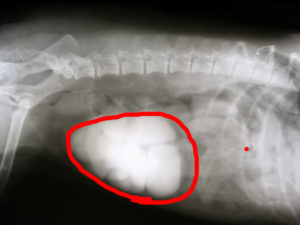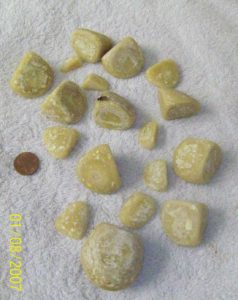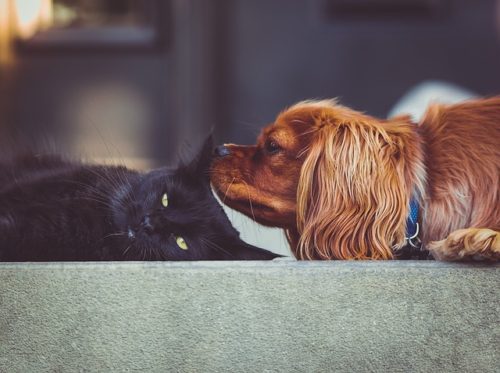After vomiting, urination issues with pets is one of the most common calls veterinarians receive. The conversations always allude to the frustration by the owner for this terrible, but natural, deed. This is one of the largest reasons for animals surrendered to shelters or kicked out of the home left to wander the streets. This is a complex issue and so since it is spring, I will begin with puppy and kitten urination issues and clarify some do’s and don’t’s when it comes to urination habits. Again this would be my personal opinion and someone else may not agree with my comments, but at least you have options when you consider others viewpoints.
Kittens instinctively want to pee in and dig into something to urinate. They learn about covering their excrement from their mother. If you have an orphaned kitten they may never learn to cover their urine or stool. They can learn to use the box but may not be tidy about it. As a kitten, they have very tiny stool and urine and the box is huge so one can get by with scooping the box weekly. Please do not do that. As the kitten grows it becomes necessary to make that box pristine to encourage them to want to use the box instead of the carpet or flower pot. I use the scenario that when I go to a public restroom and see a toilet that has not been flushed, I move on to the next stall in hopes that one is more appealing. Cats do not want to step into the box and smell another cats urine or stool. They do not want to dig where they have already peed or pooped. They do not want to dive head first into a tub that smells or has clumps in it. If they bump their head on the hood/cover every time they attempt to pee or poop they may go elsewhere. A good rule of thumb is 1 litter box per cat in the house with daily scooping required of all boxes. Daily also add some fresh litter over the top. At least monthly you should dump the entire box if using clumping litter and weekly if using clay litter. It is important to not switch litter types abruptly. Cats are not fans of change. One way a cat may stop using a box is to suddenly changing the type of litter without a gradual mixing over time of the two types of litter. Be aware of the type of stool and size of clumps when cleaning the box. Any changes can be a clue to other health issues that could be life threatening if not addressed. Now having said this, I know some people have cats that do not seem to mind a dirty box. Feel blessed or be aware that things can change in a heartbeat and you may need to practice new litter box hygiene.
House breaking is the first hurdle that needs to be conquered when you bring home that cute adorable puppy. Most people get the puppies around 8 weeks of age. A puppy gets good bladder control at about 16 weeks of age. What that means is they can learn to go outside, but there is no waiting allowed before 4 months of age. If they need to go, they need to go now. Using a crate or kennel can encourage them to hold their urine. When you get home, and are attempting to get them out quickly enough to relieve themselves, you may have some oops moments. A puppy under 16 weeks should be let out every 4-6 hours during the day and every 6-8 hours at night. Do not feed or leave water in the indoor kennel since that may make it necessary for them to relieve themselves in the crate. Any puppy that eats and drinks will most likely need to go outside within 30-45 minutes. Plan to get up earlier each day so you can make certain they have had ample opportunity to relieve themselves before you leave. If you have to be gone longer than 6 hours, find a friend, neighbor, family member that can come in and let your puppy out. Avoiding accidents is the best way to be successful with house breaking.
NEVER, NEVER punish the puppy if they have an accident in the house. You can startle them if you catch them in the act by clapping your hands and scoop them up and see if they will finish outside. If you find the pee or poop in the house, rubbing their nose in it or scolding them while pointing or showing them the waste will make them realize you do not like pee or poop so they will avoid doing it in front of you. They do not connect that you are scolding them because they did it in the house. That is often why they sneak away and avoid being seen while in the house relieving themselves. It is also why some puppies will never go potty when you are outside with them watching. They know you do not like poop or pee because it makes you all growly and mad. Puppies get distracted often when outside and do not completely finish their business. It is wise to take them out on a leash and use a command, “Go Potty”, and not allow any playtime until they have taken care of business. Do offer a treat right outside when they pee or poop. Do not wait until you come indoors since that only rewards them for coming in the house. They forgot long ago that they peed while outside.
What about potty pads? I am not a fan. When you allow a puppy to pee on a potty pad in the house, you are telling that puppy it is okay to go in the house. Puppies have a preference for peeing on surfaces that they first pee on. A puppy born outside in the barn and has grass to pee on will be much easier to housebreak than a puppy that was raised on tile floors. During the winter when you put down a potty pad because it is cold outside, and then take them outside when the weather improves to pee, they are not even thinking about eliminating outside. I have suggested to some people to work past this issue to nail down a potty pad outside in the grass and slowly start cutting it smaller so eventually they are peeing in the grass. I can assure you though that they may still find it convenient to pee on the newspaper or magazine left on the floor.
If you are having housebreaking issues with your puppy after 4 months of age, do not ignore this. By doing so you may never have a dog that you can trust in your home. There are some medical causes for poorly house trained puppies. Speak with your veterinarian if you are concerned. The longer the puppy eliminates in the home the more challenging it gets.
Male intact pets during the mating season can start marking in the home. Some females during their heat cycle will urinate to alert the males that they are soon ready. These are instincts that are normal behaviors and can be difficult to rectify when the hormones are raging. Obviously by neutering and spaying your pets this can be controlled and avoided. Keep in mind that the longer the pet has been marking the more difficult it can be to reverse the behavior.
Diets can have an impact on urination habits. FUS stands for Feline Urological Syndrome and years ago we would see multiple cats a week with urinary issues. The males cannot urinate and the females are peeing outside of the box in small quantities and more frequent times. Over the years a number of cat food companies recognized that diets can prevent the cause of this medical condition and so they have adjusted the formulas. We do not know why some cats are affected by this and another in the same household is not. We still see a few cats each year with these issues but are happy when we can prescribe a diet that will prevent crystallization(sand like) in the urine.

Dogs can have cases of crystallization of the urine but they are more often diagnosed with bladder stones. These are not stones in the kidneys or coming from the kidneys. These stones develop only within the bladder and cause urination issues over time. Some dogs try to pass the stones and cause blockages and cannot urinate and others will have accidents in the house with or without visible blood in the urine. A radiograph is often the best way to diagnose this condition. These stones are mineralized so they are very obvious in the bladder with a radiograph. Some stones can be dissolved with special prescription diets but others will require surgical removal. To avoid reoccurrence a preventive diet is prescribed for the rest of the pets life. Cats can also get bladder stones but it is less common.

Urinary tract infections are seen in pets as well. Often times the pet is drinking more water. Asking to go outside more often. Peeing smaller quantities more frequent times. Cannot hold their urine through the night or day while you are at work. These are treated with antibiotics and often recovery is reached in 7-10 days.
Urinary incontinence is common in aging female spayed dogs. The important thing to consider here is if you note that there is a wet spot where your pet laid while sleeping. In these situations, they are not actively squatting and peeing but instead the urine is seeping out when they are relaxed and are not even aware that it has occurred. We have wonderful medications to help prevent this issue for your pets. It does not have to happen every time they sleep so make certain you are seeing this often enough to justify the daily medication for life.
Numerous health conditions affect the thirst and urination habits of pets. These conditions are more likely noted in aging pets. Many times when I ask clients about a pets water consumption the response I get is, “They drink plenty of water.” Is this amount normal or excessive? Clients bring the pet in because they are peeing in the house. What I am trying to determine is whether this pet has one of the above concerns or a major health issue associated with the thyroid, pancreas, liver, kidney, uterus, etc. These health issues require additional diagnostics to find the cause and extent of the disease. A healthy pet should drink at least 1-2 times the amount of dry food they eat in a day. If they are eating canned food they will drink much less. If your pet is drinking more than that or you are filling the water bowl up more than you used to or your pet is now drinking from the faucet or toilet bowl you may have a pet with a health concern. If the litter box has much larger clumps of urine than before or you need to change it more frequently, your cat may have a health concern. Many of these conditions can be treated with medications and/or special diets. The sooner they are diagnosed the better chance we have of controlling the symptoms of increase thirst and urination.
Behavioral issues are often blamed for a pet urinating in the house. I am not saying that this does not occur but I feel it is necessary to rule out the above concerns before classifying your pet as having a behavioral problem. Perceived behavioral issues relating to inappropriate urination are most often discovered to have a medical basis.
As you can see there are multiple reasons for pets urinating in the house. I am sure I have missed other causes but wanted you to be aware of things that matter when trying to determine the reason for your pet peeing on your carpet. If this article has triggered any concerns with your pet, be certain to contact your veterinarian. Early intervention in each of these situations can improve the life of your pet and hopefully prevent you from having to replace your carpet!
